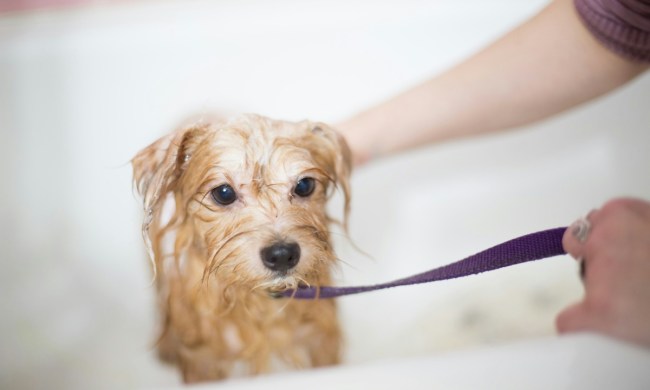Rottweilers are big dogs — which is one of the reasons we love them so much. These highly intelligent canines become loyal members of the family and are great guard dogs. Even though they are lovable and respectful, an adult male can weigh as much as 130 pounds. Their size alone can intimidate any would-be intruders.
But with the propensity to grow so large, a hardworking guard dog needs a soft place to lay his head at the end of the day. How to choose the right dog bed for your family sentry? Rottweilers will love their beds if you follow these directions.
Choosing the right size
If you visit your veterinarian regularly, you most likely know how much your Rottie weighs. One other measurement you need is your dog’s height and length. Before you begin shopping for bedding, take a moment to measure from the tip of his nose to the base of his tail and then add 12 inches to make sure you order the right length.
When you find a style you like, check the sizing recommendations for that brand. Most manufacturers will note weight and size recommendations to make sure customers buy the right size for their furry friend.
Choosing the right firmness
Rottweilers are big, dense dogs with joints and muscles that deserve to be supported. Hip and elbow dysplasia, along with joint-related osteochondritis dissecans, is a common health concern with this breed, especially among those that are heavier and less active.
For these reasons, it’s best to buy a bed with memory foam or an orthopedic mattress that will conform to your Rottie’s body and distribute his weight evenly. Look for a bed with dual-foam construction — one layer is memory foam, and the second layer provides orthopedic support. As your Rottie ages, he’ll appreciate the extra comfort this combination affords him as he sleeps or whenever he needs a place to rest.
How to determine the right features/design
It can be comical to watch your Rottie sleep — and beneficial when the time comes to buy him a good sleeping bed. Knowing his favorite position can help you determine which style of bed he’ll feel most comfortable in.
- Couch style. These beds have bolsters on at least two sides, which are great for resting a massive head. Couch-style beds also provide a cozy border for those dogs that like to sleep curled up in a ball.
- Mattress-style beds work well for your Rottie’s crate or when space is an issue and you need to slide the mattress beneath your own bed. Dogs that don’t like to rest their head may appreciate a mattress style so they can completely stretch out.
- Elevated beds are usually made with mesh material. These are great in warmer climates, especially if your Rottie spends a lot of time outside, so that air can circulate beneath him. Look for sturdy construction with this option, including steel frames, nonskid feet, and nylon materials that will adequately support your big dog.
What else should you look for? Most dog bed manufacturers offer a variety of shapes and colors to complement almost any decor. Durable materials like canvas, cotton, and nylon will hold up better than others, especially if your Rott digs or scratches to arrange his bedding before he lies down. If your older dog has incontinence issues — or your younger one likes to play in any body of water he finds (including his water bowl) — consider a waterproof covering. And, depending upon how dirty your Rottie gets, it may be nice to have a removable, machine-washable cover.
Is age a consideration?
Definitely. Rottweilers reach their full height at one year of age but do not reach full size until they are almost three. If you begin with a puppy, buy a bed that fits his little body and upsize as your Rottie grows.
The Rottweiler name originated in Germany, where these big dogs were originally bred to herd livestock and pull carts full of butchered meat to market. Later, they were among the first breeds to serve as guide dogs for the blind. Today, they are still hard at work, protecting their human families. You’ll find investing in a comfortable, supportive bed for your loyal and devoted “butcher’s dogs” is a small price to pay for the love and companionship he provides.




